The pickup truck market in Russia has always been quite small. Our compatriots somehow avoid cars that, for example, are sold quite actively in the USA. Even despite the growth in sales in the summer of 2024, according to Avtostat, their volume looks modest against the background of ordinary SUVs and crossovers. Thus, in June of this year, as many as 2,214 new pickups were sold in the country, which is 62% more than a year earlier. But, for example, 6,983 new crossovers were sold in the same month, and in July this figure was 8,292 cars.

The Chinese concern GWM (Great Wall Motors) is currently the leader in pickups on our market, occupying 23.4% of the market. In second place is also the Chinese JAC, and in third place is our domestic UAZ. GWM’s leadership is clear, the manufacturer sold cars in this body until 2022, and now it has two models of pickups in its lineup that meet the needs of domestic buyers. The first model is the GWM Poer, we have already talked about it, it is a universal frame car with an automatic transmission, which I often see on the roads. And the second model is the GMW Poer KingKong, a frame pickup with a diesel or gasoline engine as long as 5.6 meters, which is presented here only with a manual transmission.
Despite the fact that the length of the Poer KingKong body is an impressive 5641 mm, in other dimensions the car lags behind the same GWM Poer. The width of our guest today is 1880 mm (the regular Poer has 1934 mm), and the height of the body is 1815 mm (Poer – 1886 mm). The pickup with the formidable name KingKong is already lower than its older brother, and not only in numbers but also in visual impressions and in the feeling in the cabin. In addition, the car got 17th wheels, which look very tiny on such a body with such arches. But, on the other hand, in the case of the Poer KingKong, we are talking about a truly working car, since few will consider an almost six-meter pickup on mechanics as a universal solution, unlike the GWM Poer.

In general, the KingKong looks very specific for its dimensions. The really powerful, cargo-like front part does not quite match the width of the body. Although you can find angles from which the car looks cool. The hood is long, the muzzle is blunt, with a large radiator grille and large rectangular headlights at the edges. By the way, the optics here are all halogen, the headlights are lens-type, but they do not give the best light. The body is classic for pickups, and also four-door, and the long open side closer to the cabin received a steel safety arc.

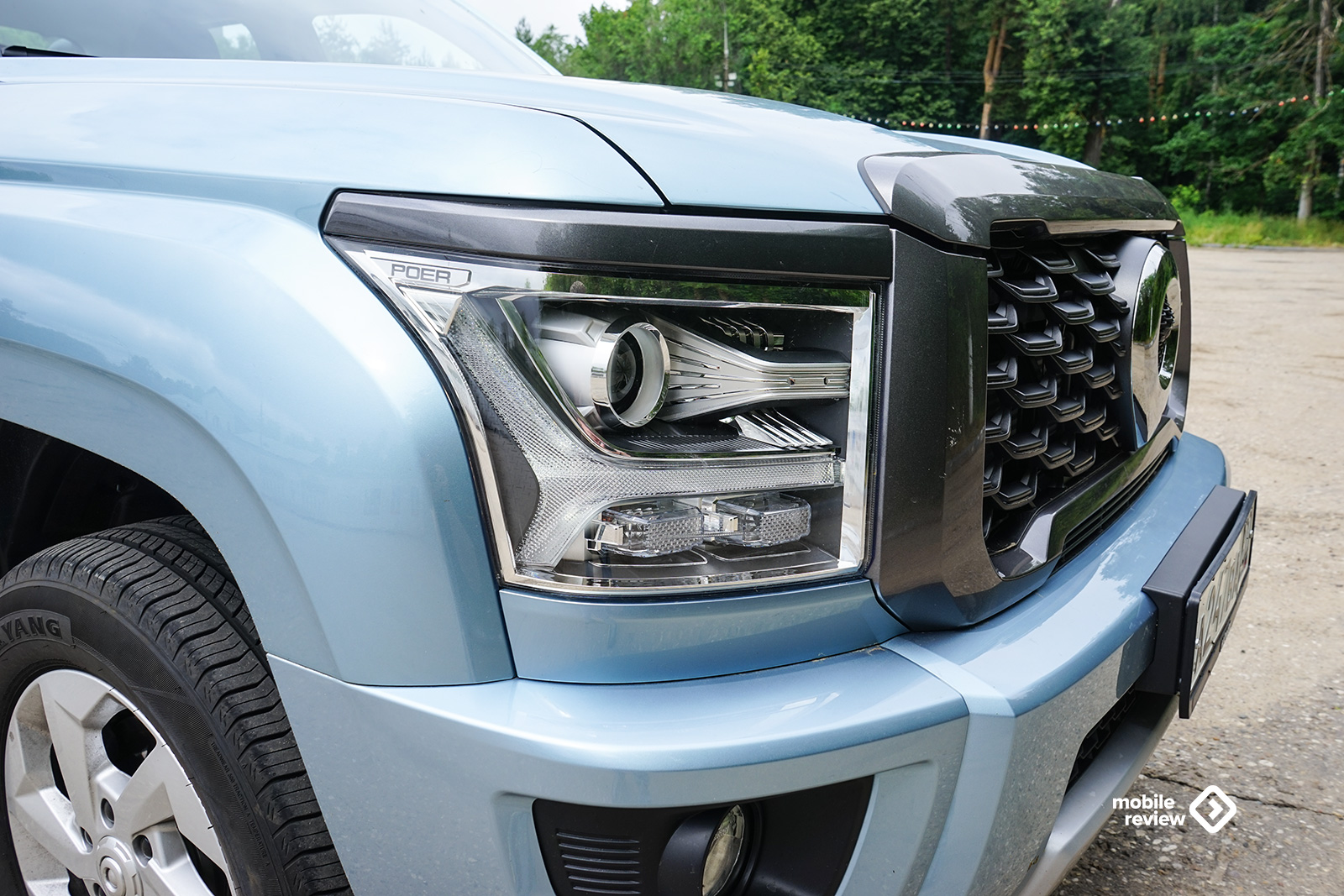
The model’s gross weight is 3035-3065 kg, which means that according to the documents it will be considered a truck, with the corresponding tax rate. It will also be subject to restrictions on travel in some areas of the city, for example, in Moscow there are many places where travel is prohibited for vehicles weighing more than 2.5 tons. But I don’t think that these points will be critical for buyers of the Poer KingKong.
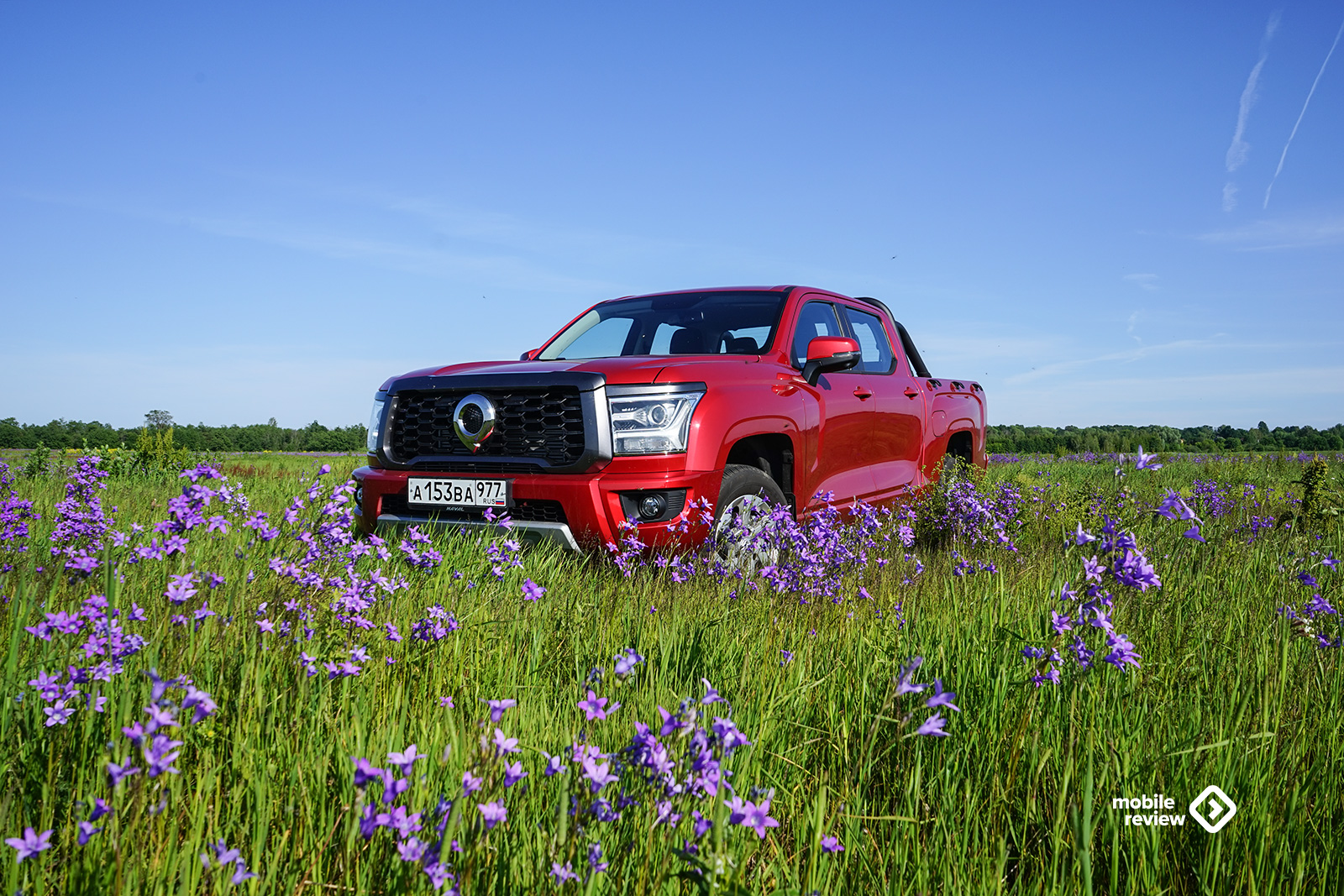
The dimensions of the pickup’s cargo platform are impressive – 1820 × 1500 × 495 mm. The side opens and locks in only one position, which is not always convenient in everyday life, but is well suited for transporting long loads. If the car is planned for daily trips, then it makes sense to purchase at least a soft awning for the cargo compartment, which will facilitate operation in the winter. Although the body here has an anti-vandal anti-slip coating. The pickup can take on board almost a ton of cargo, more precisely, 975 kg, and its rear suspension is leaf spring dependent, with hydraulic telescopic shock absorbers.
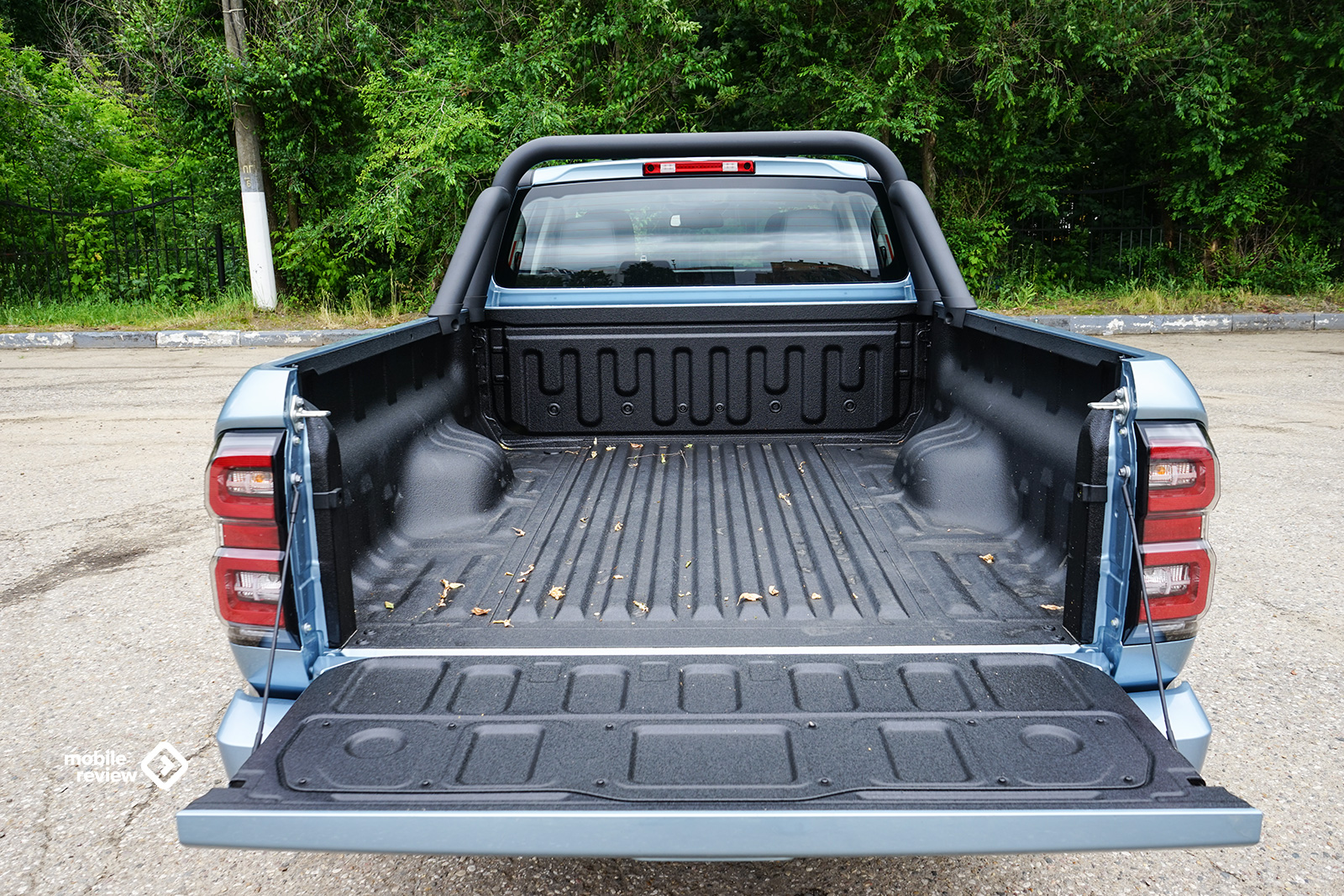
The Poer KingKong is easy and transparent to operate, you can’t even tell right away that you’re driving a pickup truck. The only thing is that the length of the body affects maneuverability, the turning radius of the car is 6.4 meters. The suspension handles large bumps in the road surface perfectly, and everything works out smoothly off-road, but it transmits all the little things into the cabin, which is unpleasant. In terms of soundproofing, everything is also good, although in the diesel version, the tractor sound of the engine penetrates into the cabin. In Russia, the car is presented with a two-liter gasoline turbocharged engine with a capacity of 190 hp and 360 Nm of torque, as well as a two-liter turbodiesel engine with 150 hp and 400 Nm of torque. Both options are paired only with a six-speed manual, and the most interesting thing is that it is better combined with a gasoline unit. The only advantage is that the diesel has a better low-end pickup and lower fuel consumption. So, if the gasoline engine in mixed driving mode consumed 15 liters per hundred, and on the highway at least 12 liters, then the diesel in the first case fit into 9 liters per 100 km. The tank here is impressive, 80 liters, so you will have to constantly refuel me.
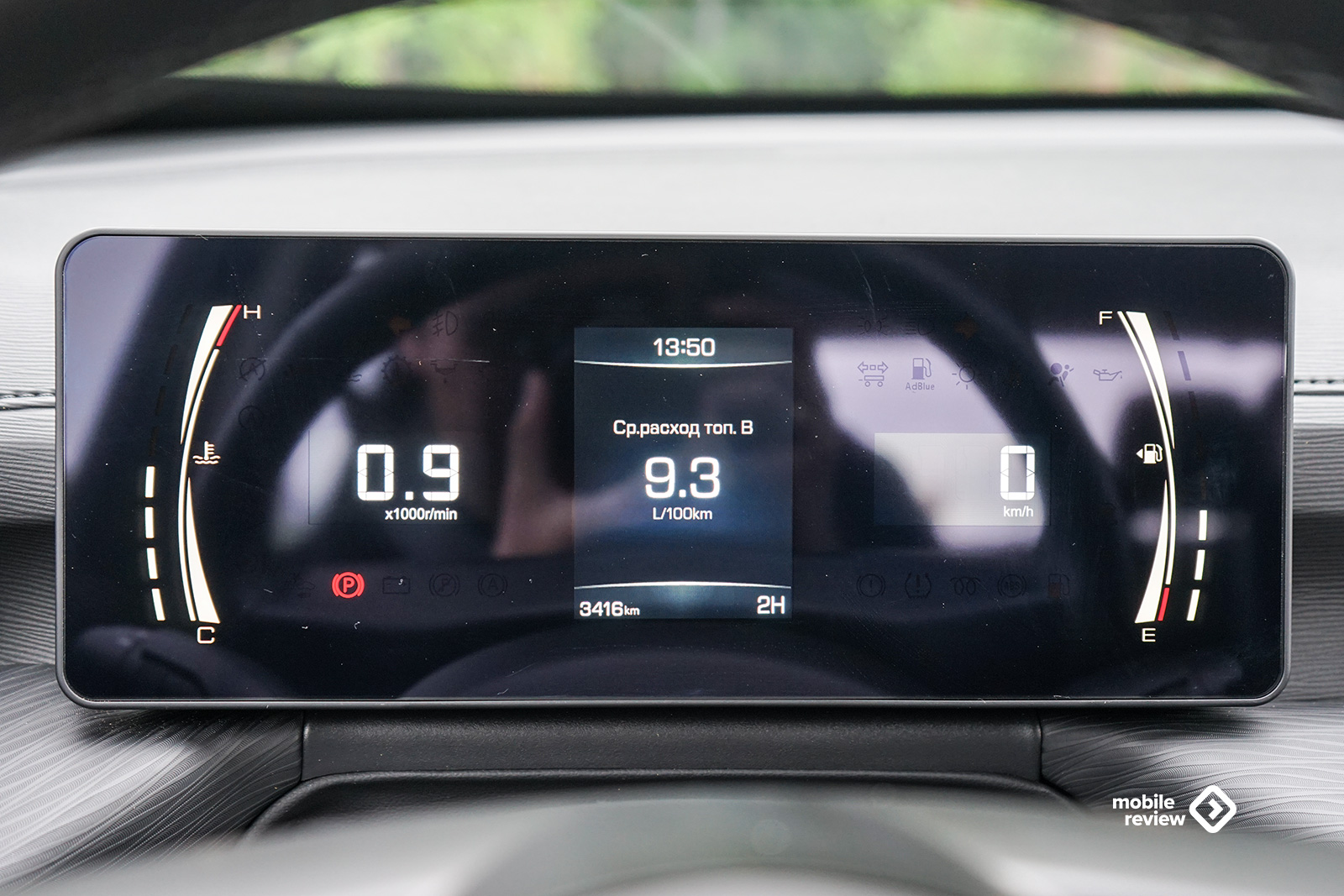
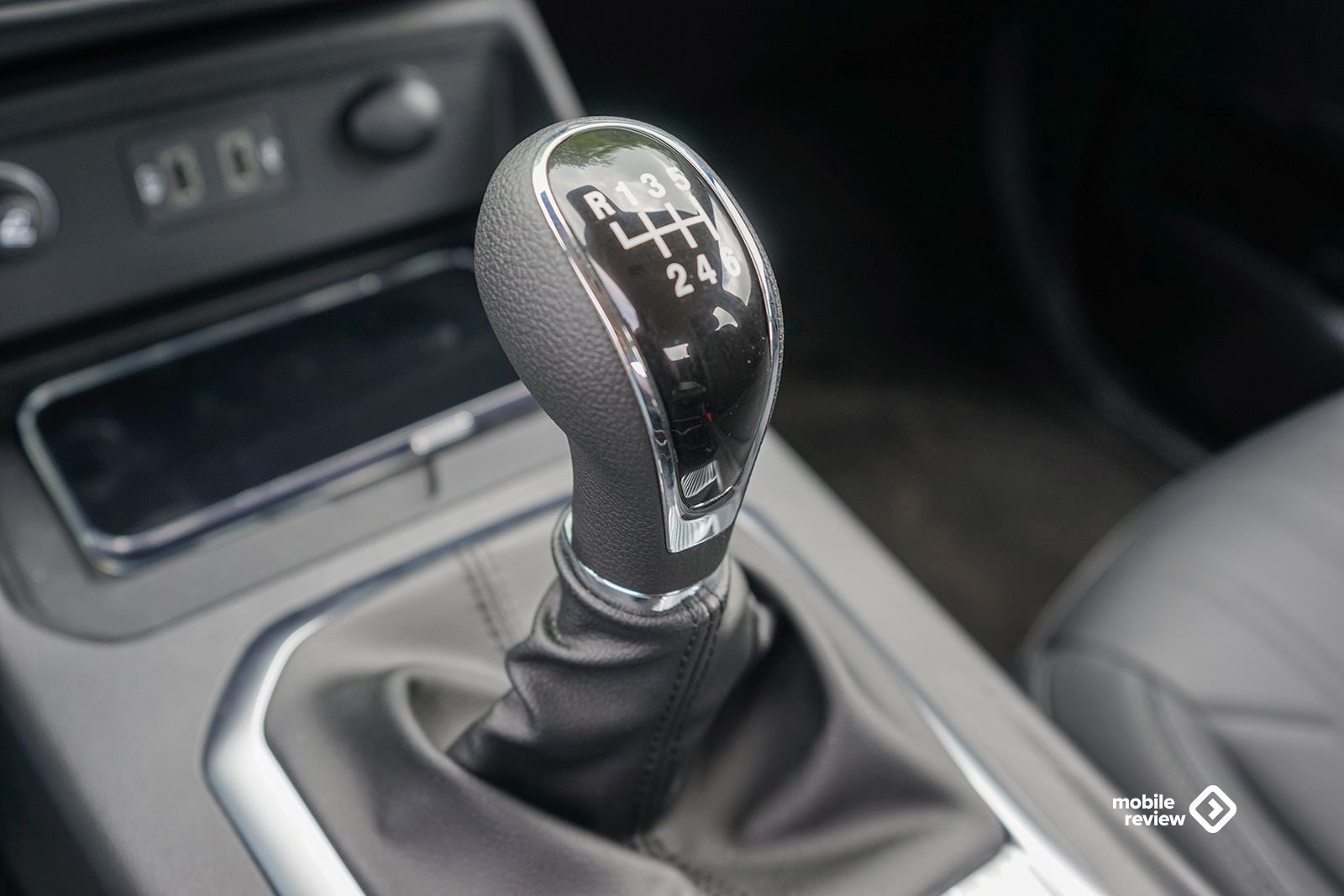
Despite the fact that the GMW Poer KingKong is a frame and all-wheel drive, it is not suitable for full-fledged off-roading. The reason for this is the relatively small ground clearance of 200 mm (for Poer it is 232 mm), as well as the long and low front and rear overhang. By default, the pickup is rear-wheel drive, but you can turn on the all-wheel drive mode, as well as lock the differential. Interestingly, all these actions are performed using buttons in the cabin, which are in the same section with the climate control keys.
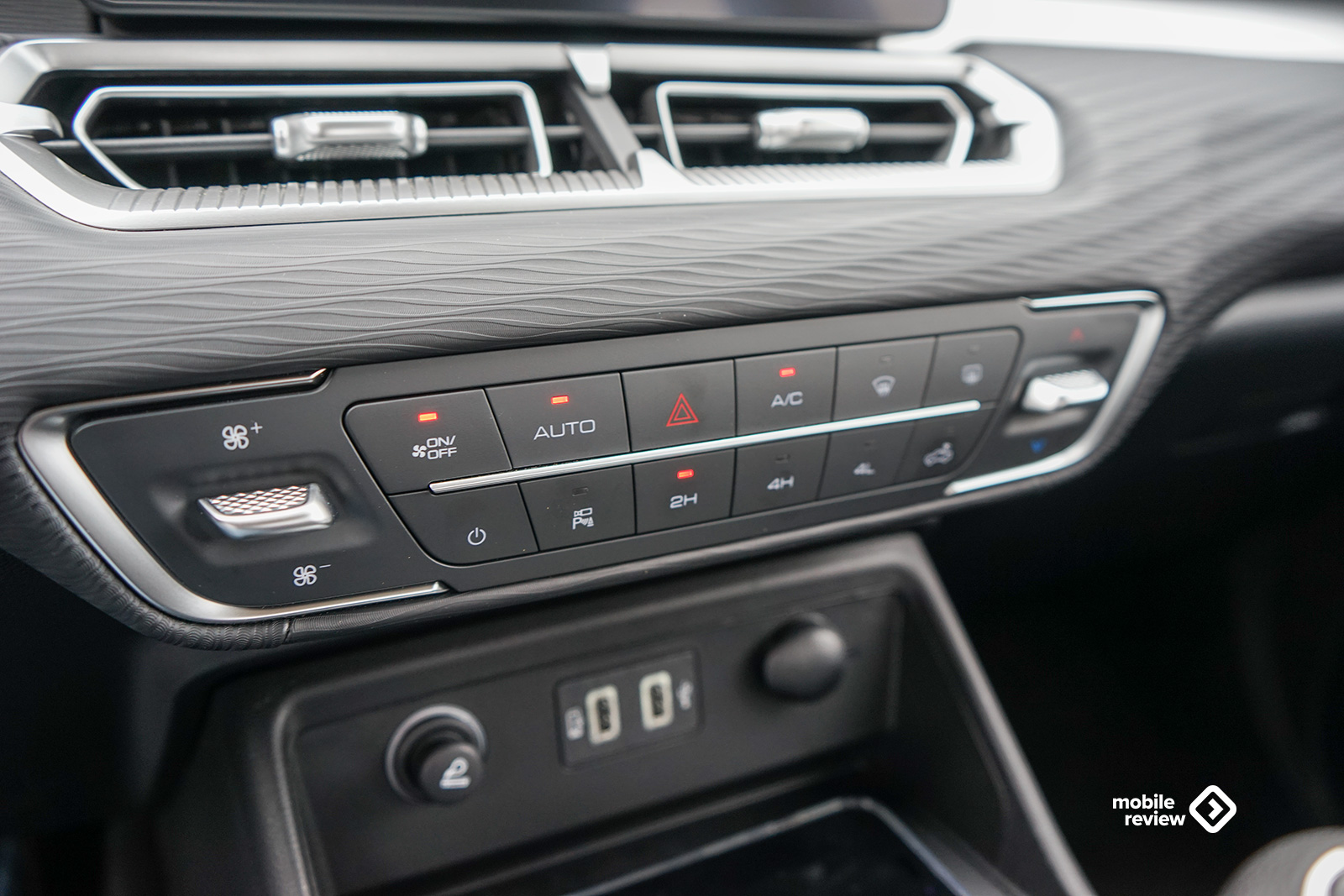
The Poer KingKong’s interior was borrowed from its younger brother, the pre-restyling Haval Jolion. Overall, it looks attractive, especially for a workhorse. There is a straight front panel with smooth transitions, which is covered with rubberized textured material. The door panels are made of soft plastic and artificial leather, and below the eye level there are simpler panels made of oak plastic, but not of the worst quality. Unfortunately, the pickup got flat front seats with virtually no lateral support, and they are too soft, and you quickly start to get tired in them. The driver’s seat has electrical adjustments, but the front passenger’s is only mechanical.
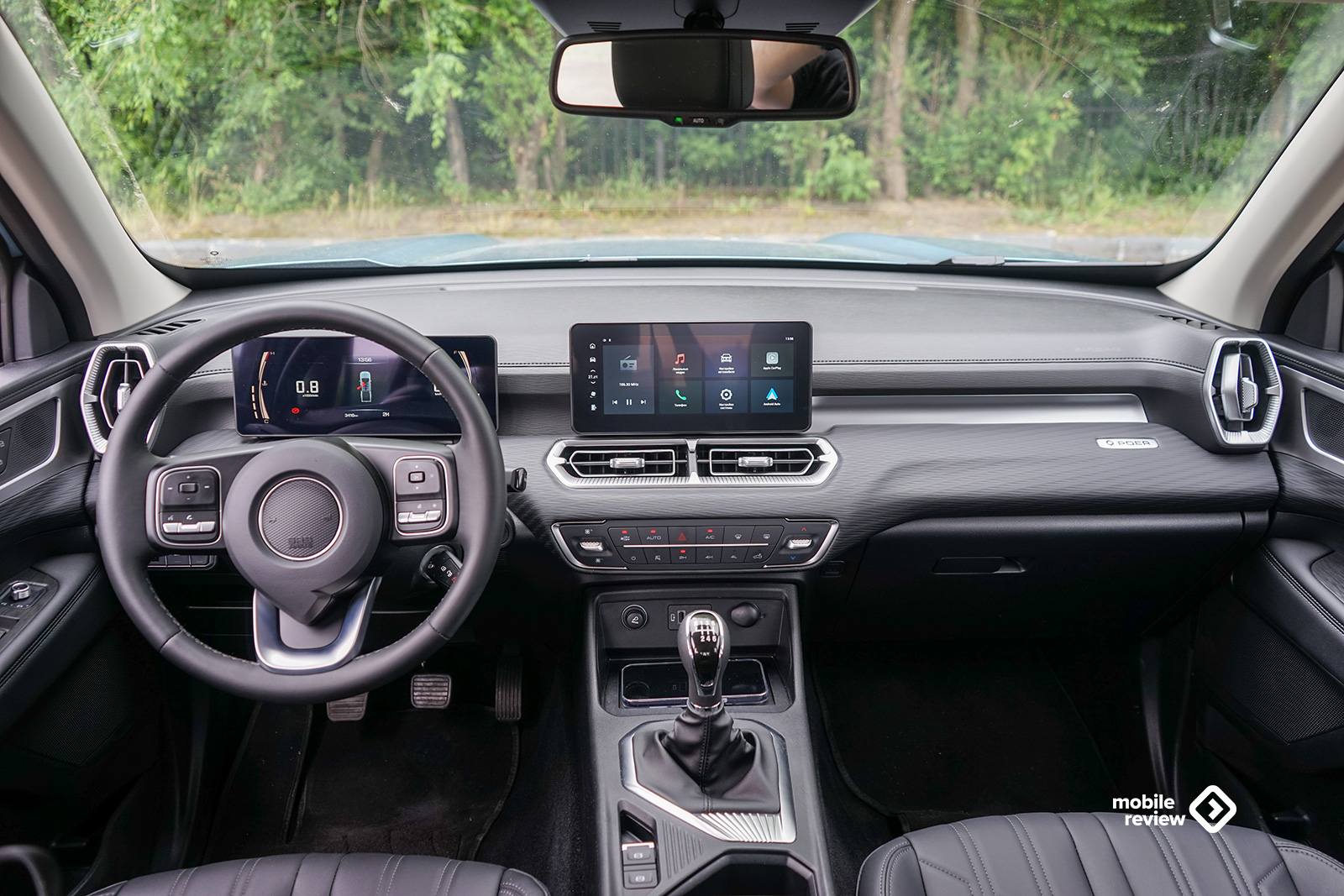
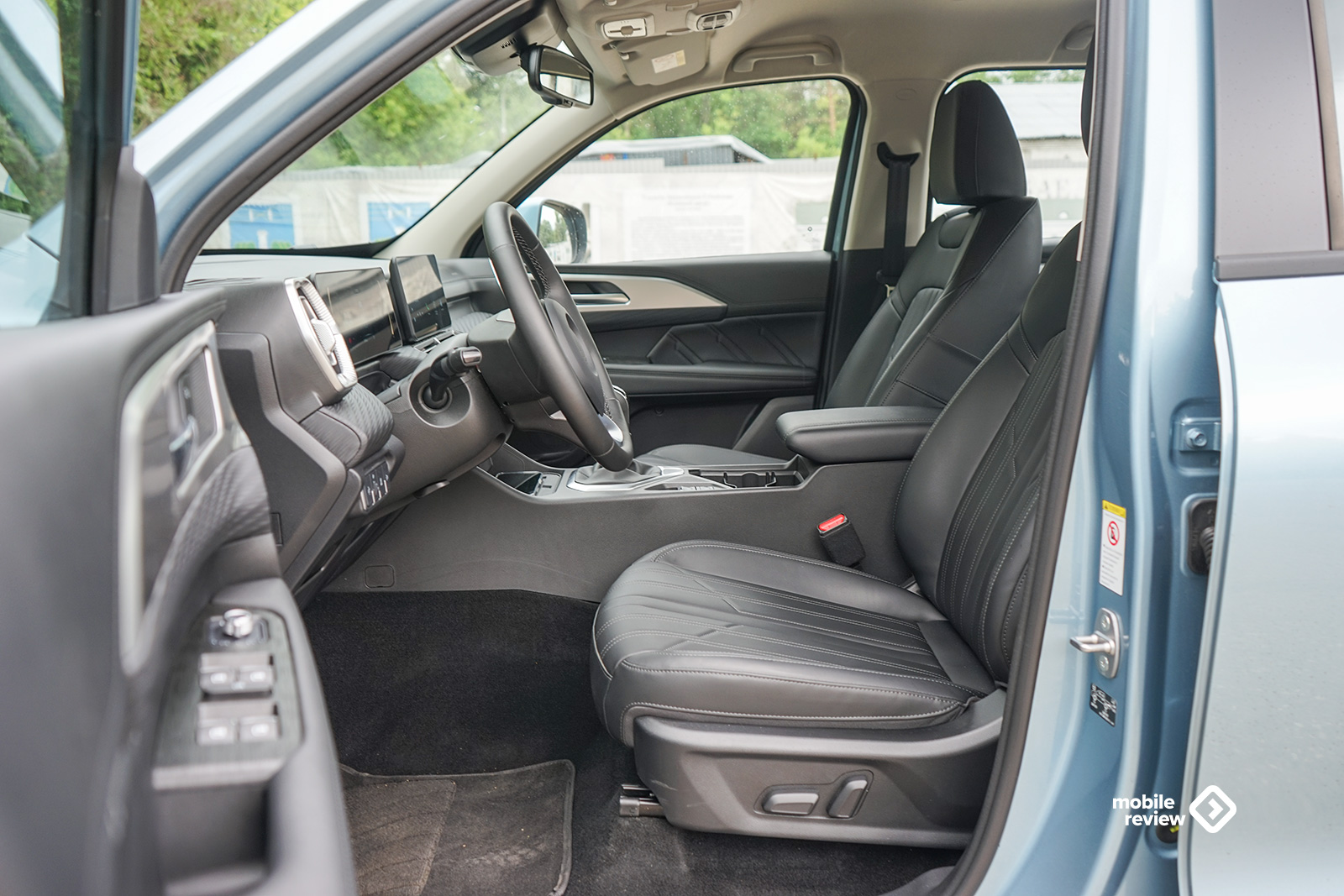
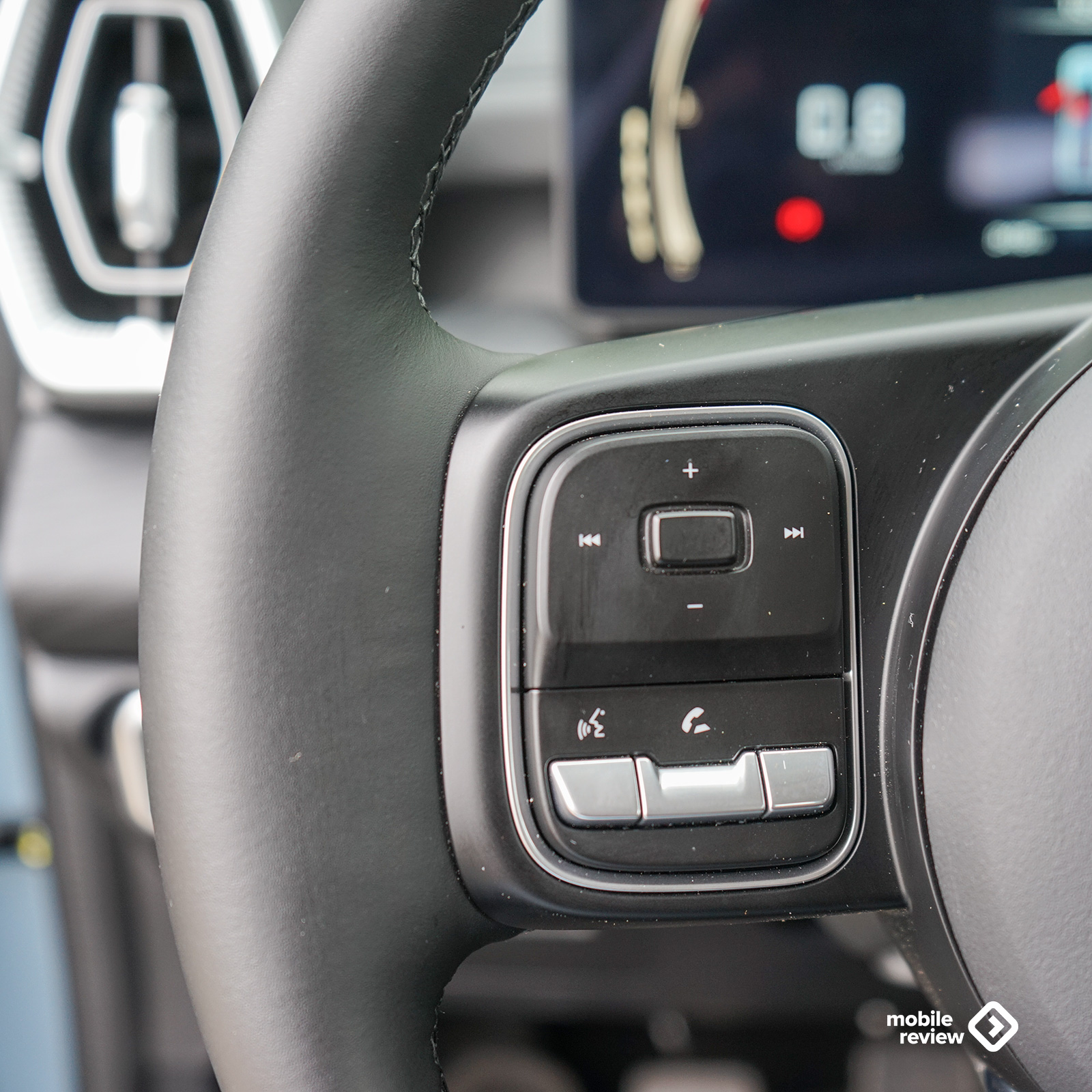
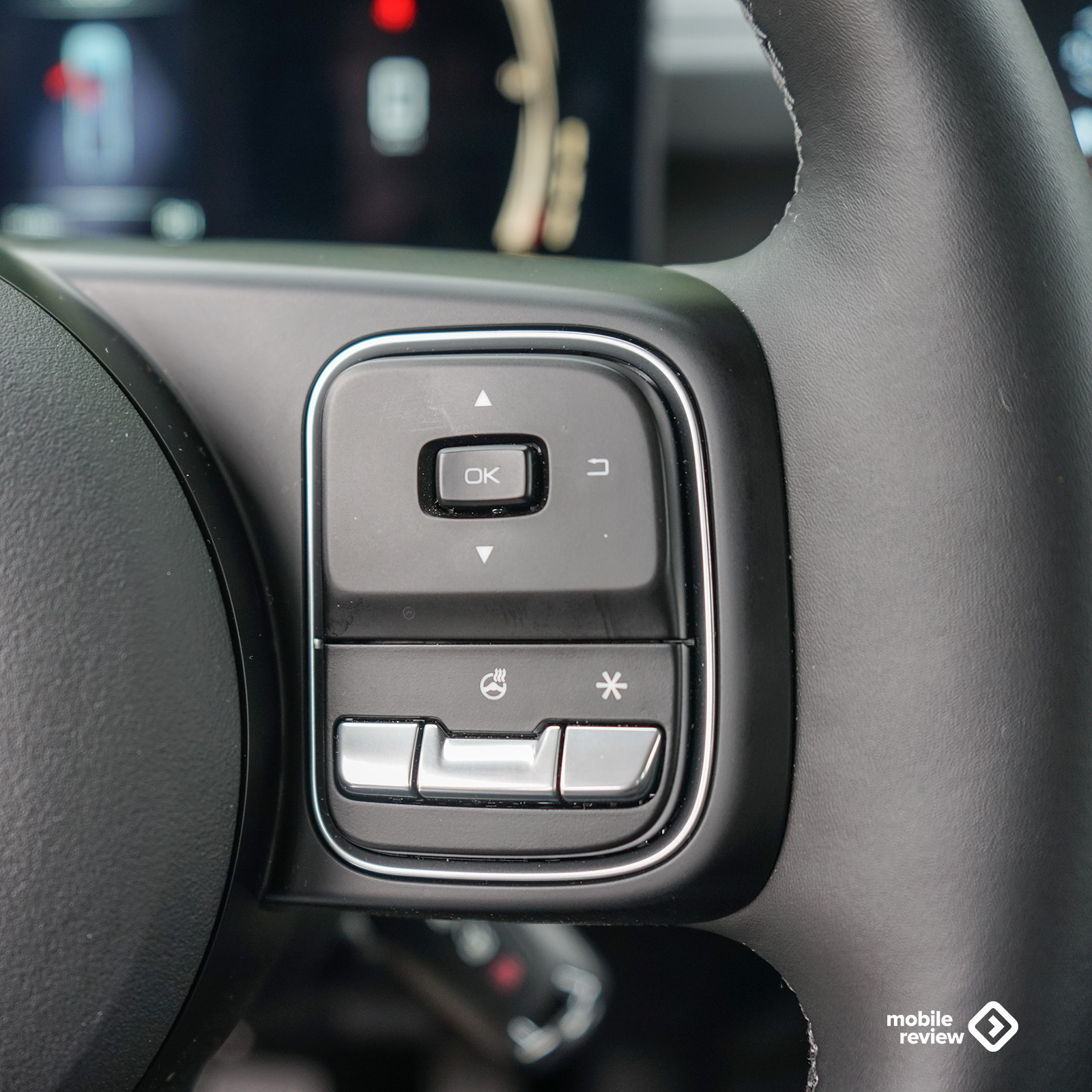
I sit behind myself quite freely with my height of 187 cm. The rear sofa is installed slightly higher than the front seats, but the backrest here is fixed, almost straight, which is not very convenient. It is nice that the manufacturer installed Isofix mounts along the edges of the sofa here too, and of an open type, so that you can install a child seat quickly and easily. The back of the sofa can be folded down, and a small niche opens up there, which will fit perhaps only a travel kit. There is no separate full-fledged compartment for things in the cabin, but the manufacturer has placed folding hooks on the backs of the front seats.
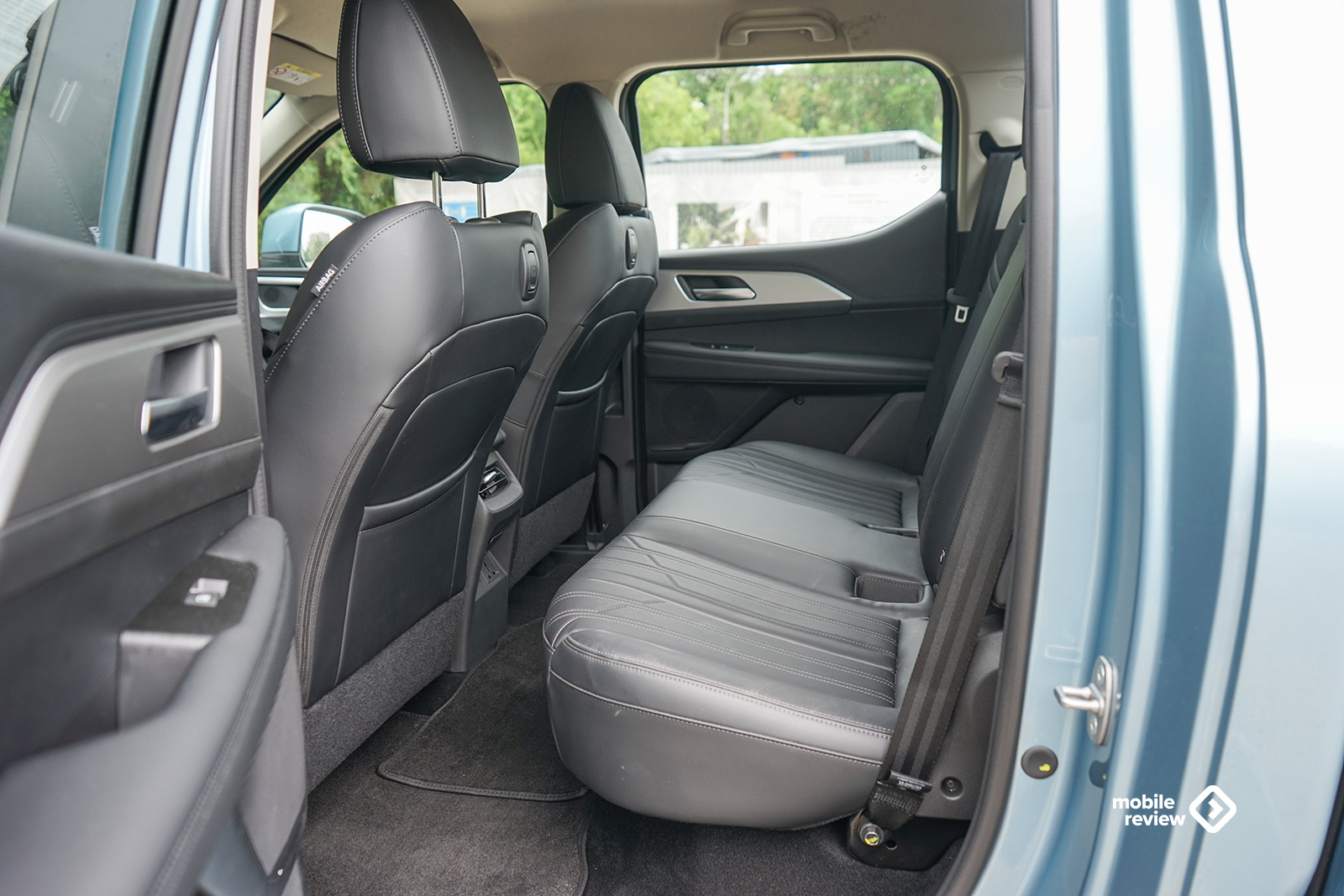
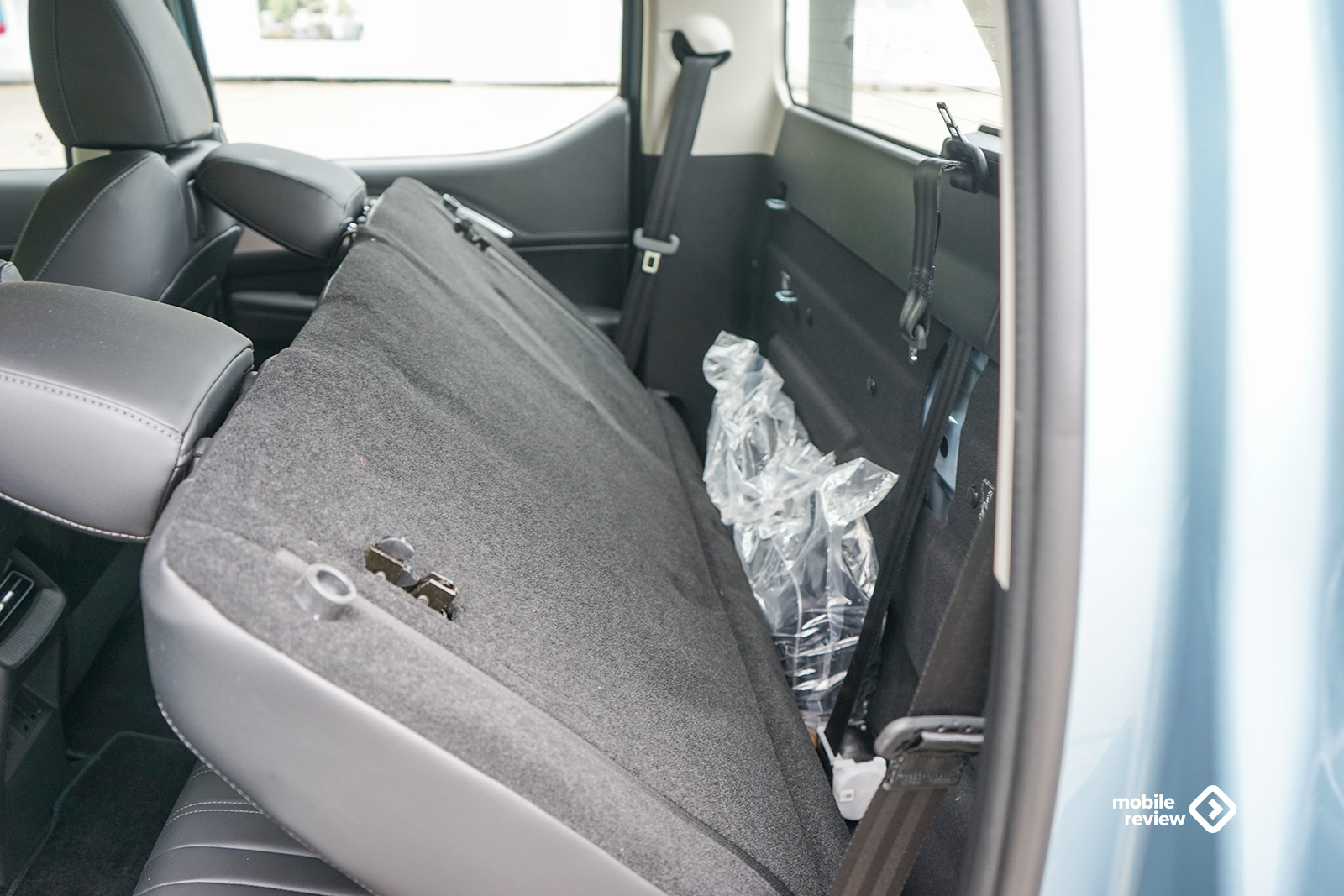
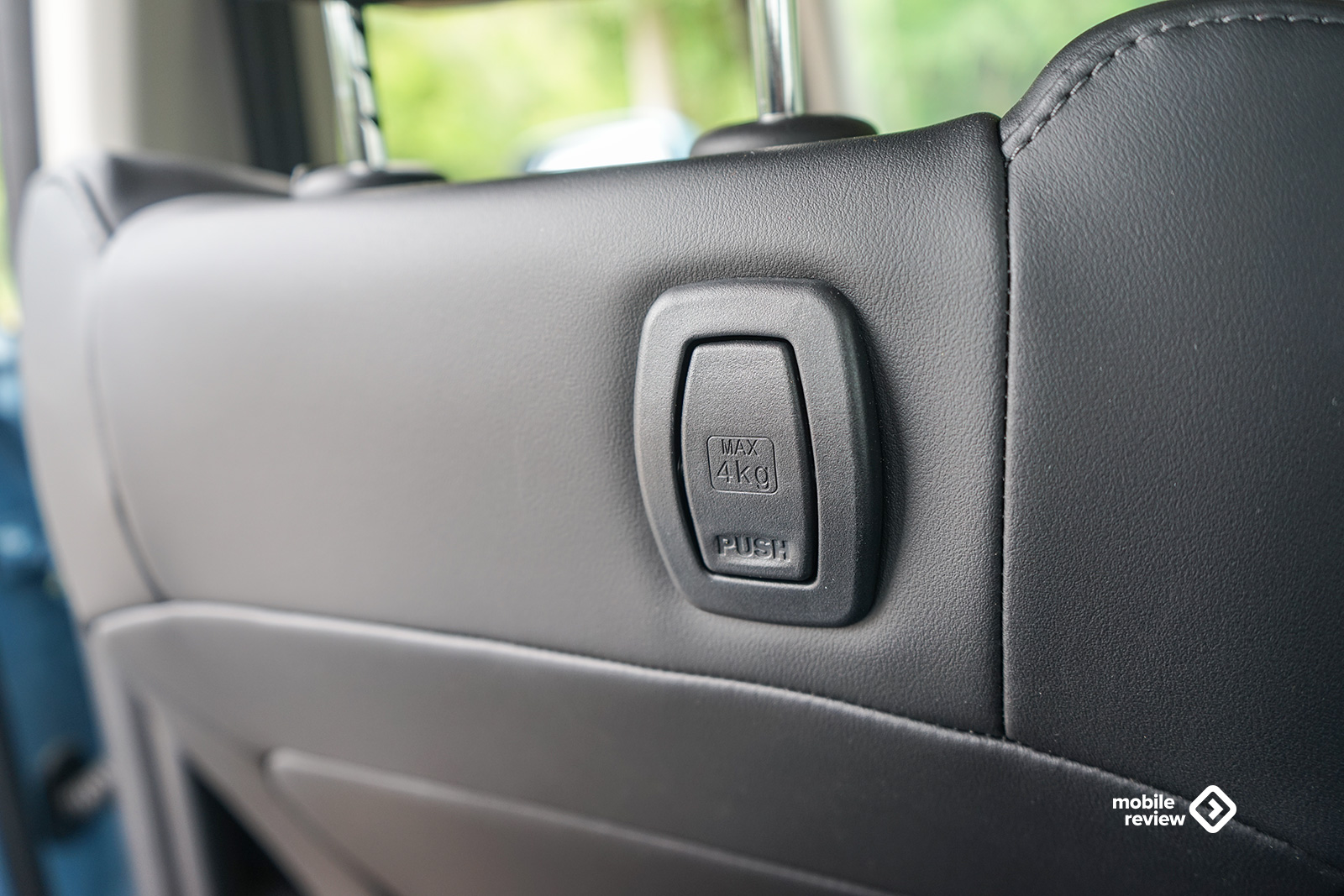
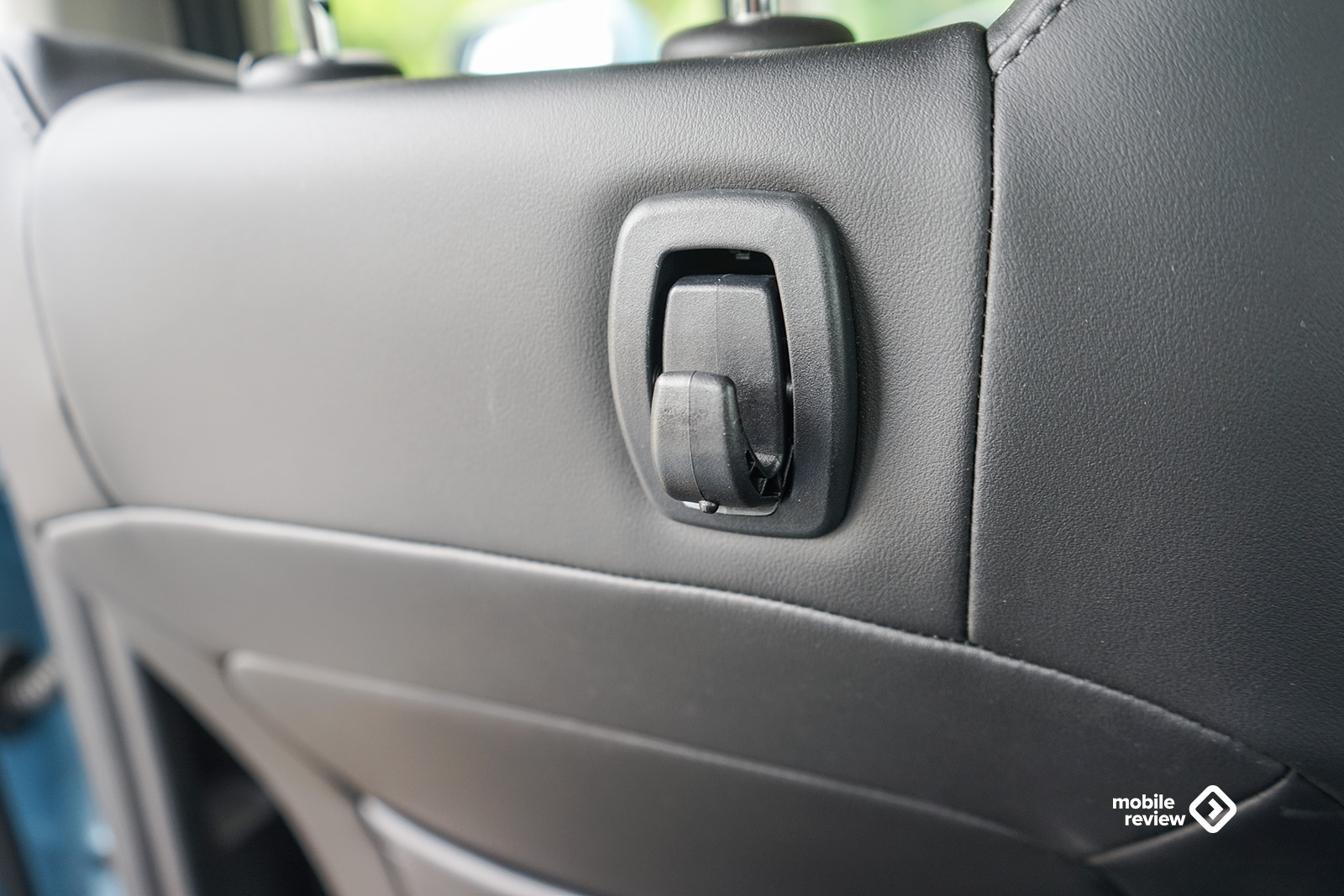
The car has a set-back rectangular instrument panel, which can be mistaken for a digital display at first, but in fact it is not. There are fixed digital screens on the edges, and a tiny color display is inscribed in the center, on which you can only view the data of the on-board computer, but you can’t even display the speedometer readings. As far as I understand, in China there can be a full-fledged virtual instrument panel in this place, but they simply decided not to bring this option to us because of the cost.
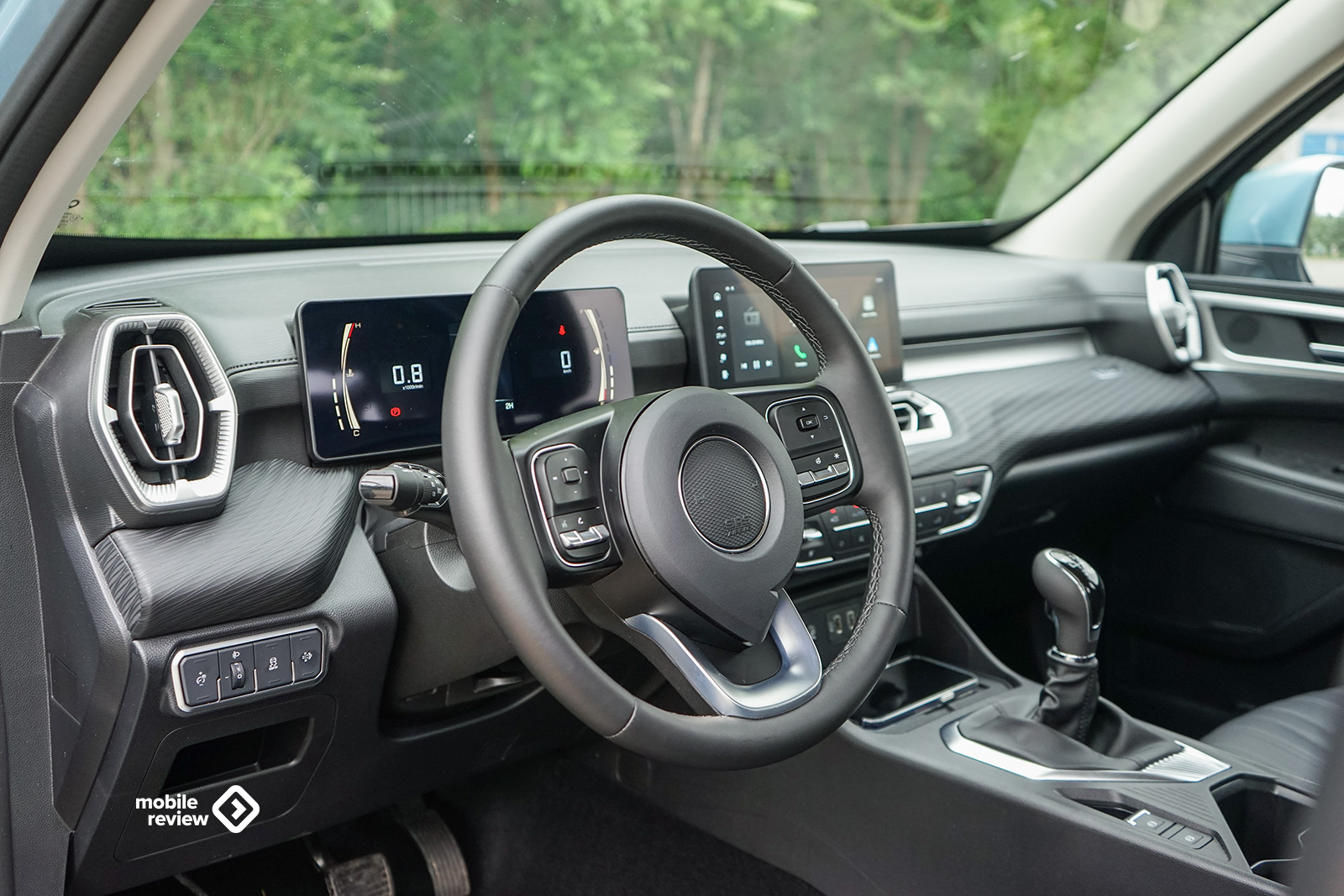
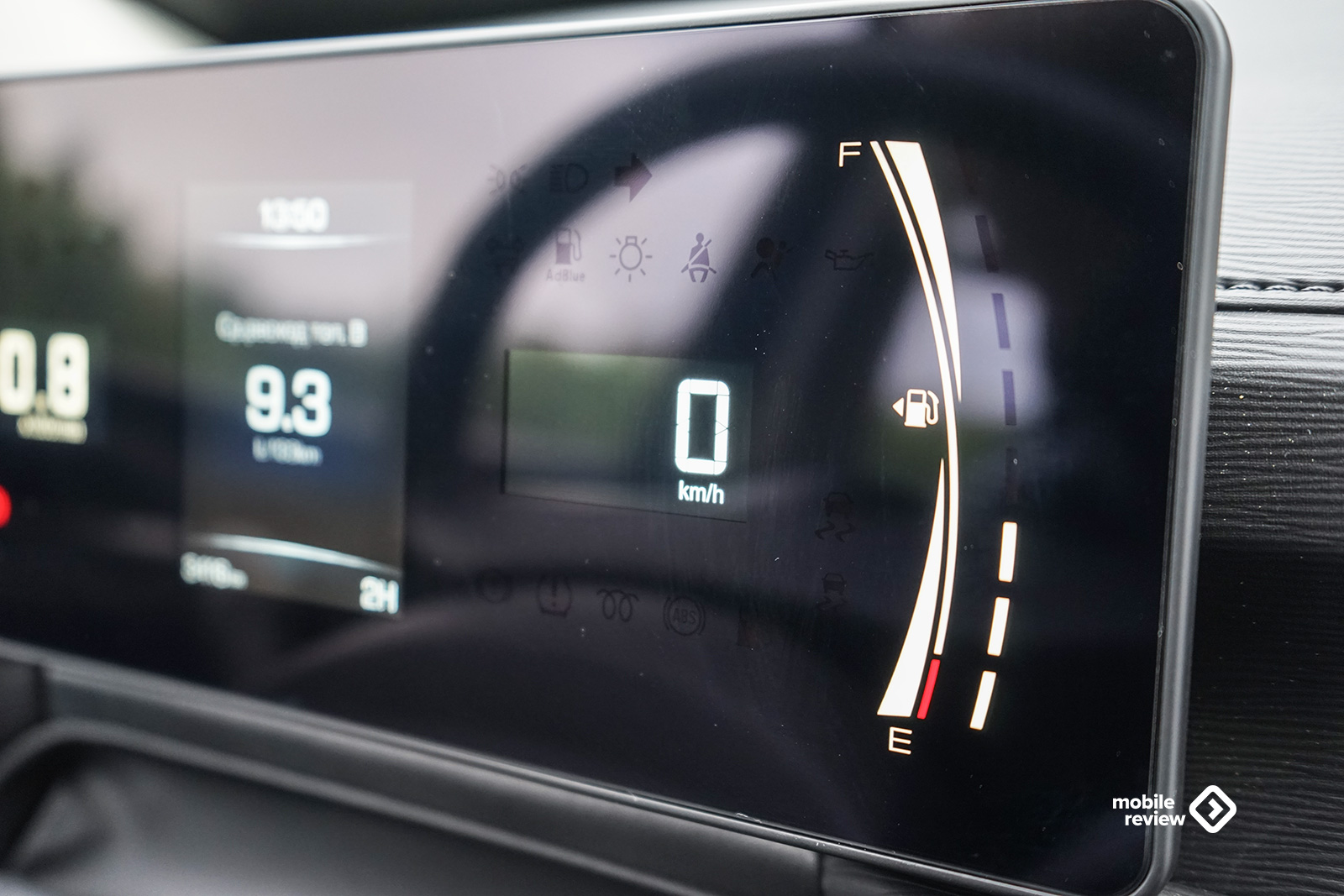
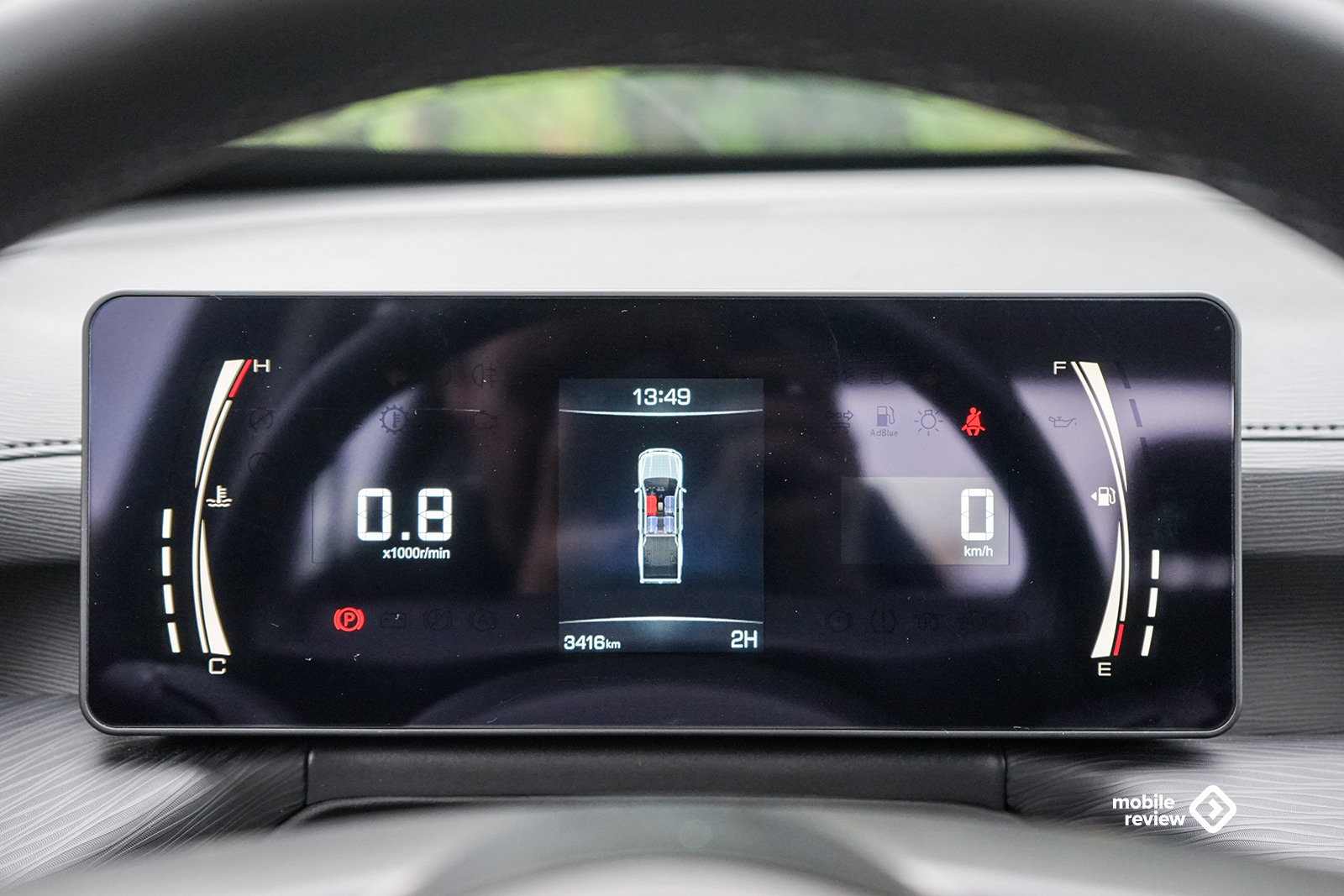
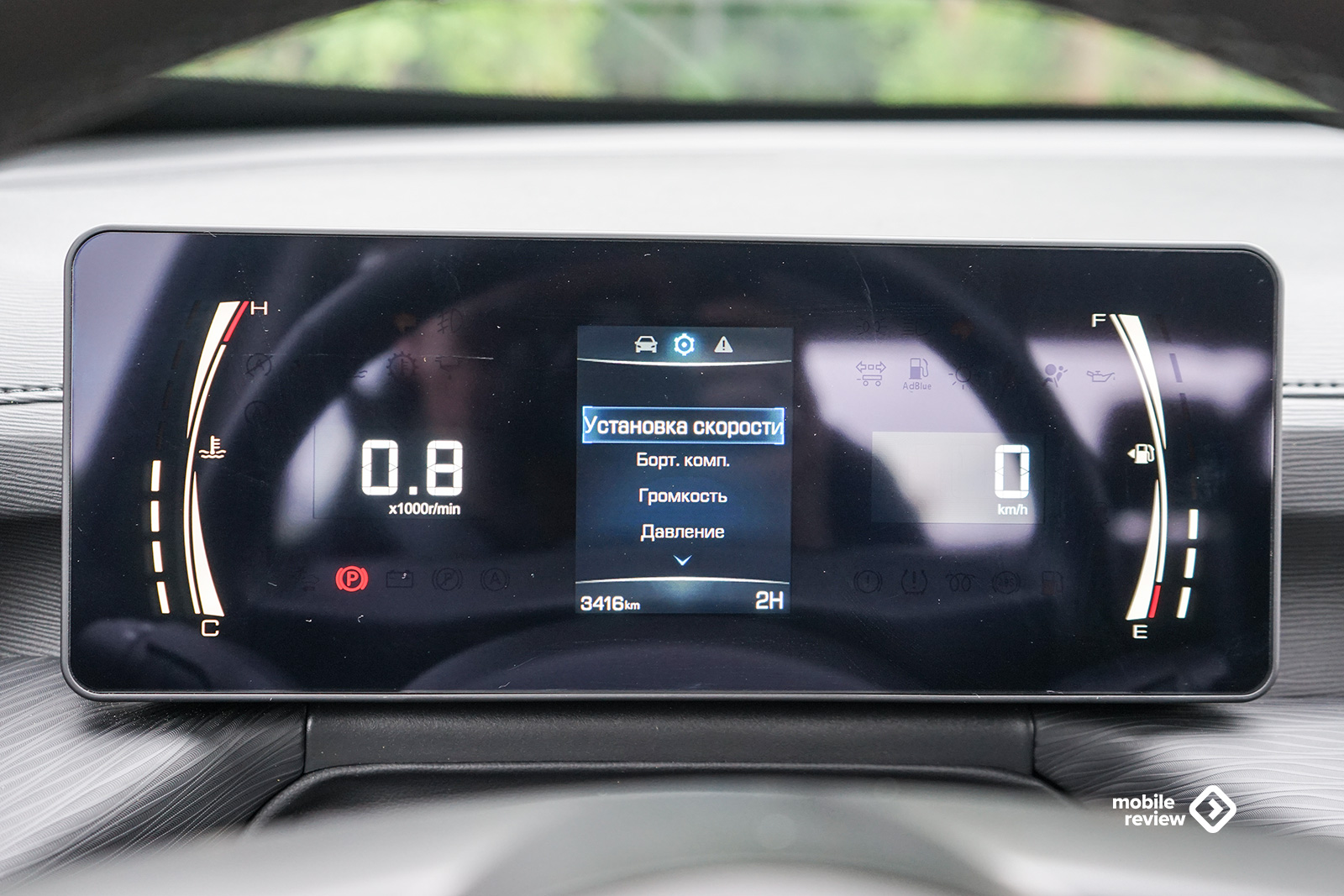
Here in the center of the front panel there is already a full-fledged 10.25-inch touchscreen display with HD resolution. Yes, it is small, but not bad either, in addition, the car system supports the Apple CarPlay and Android Auto platforms, everything is only by wire. That is, immediately, without any dancing with a tambourine, we get all the necessary data and even more. The system also supports working with music, radio and – according to Chinese tradition – watching video from external sources on the go. The menu is standard for GMW cars, with clear logic and good drawing.
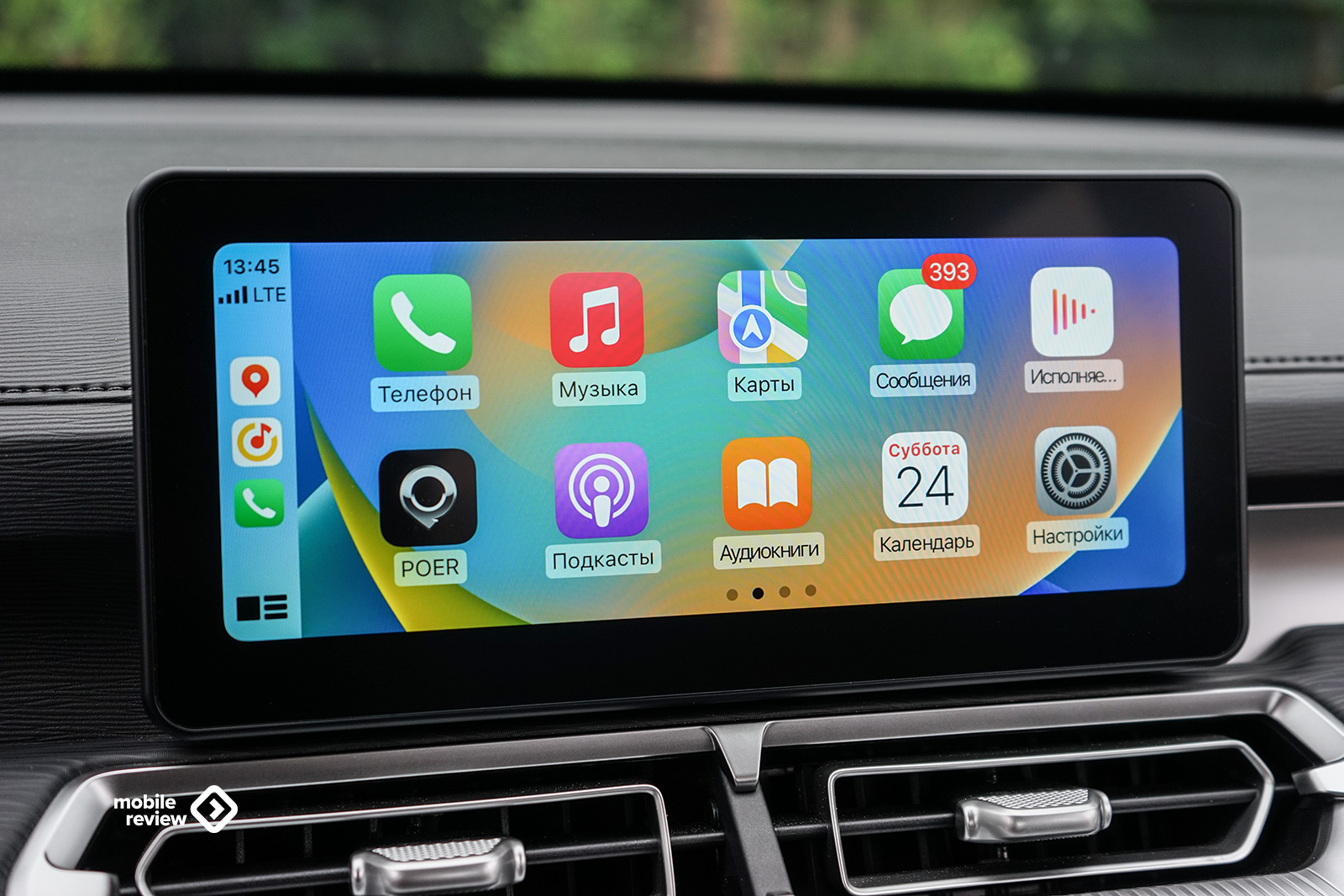

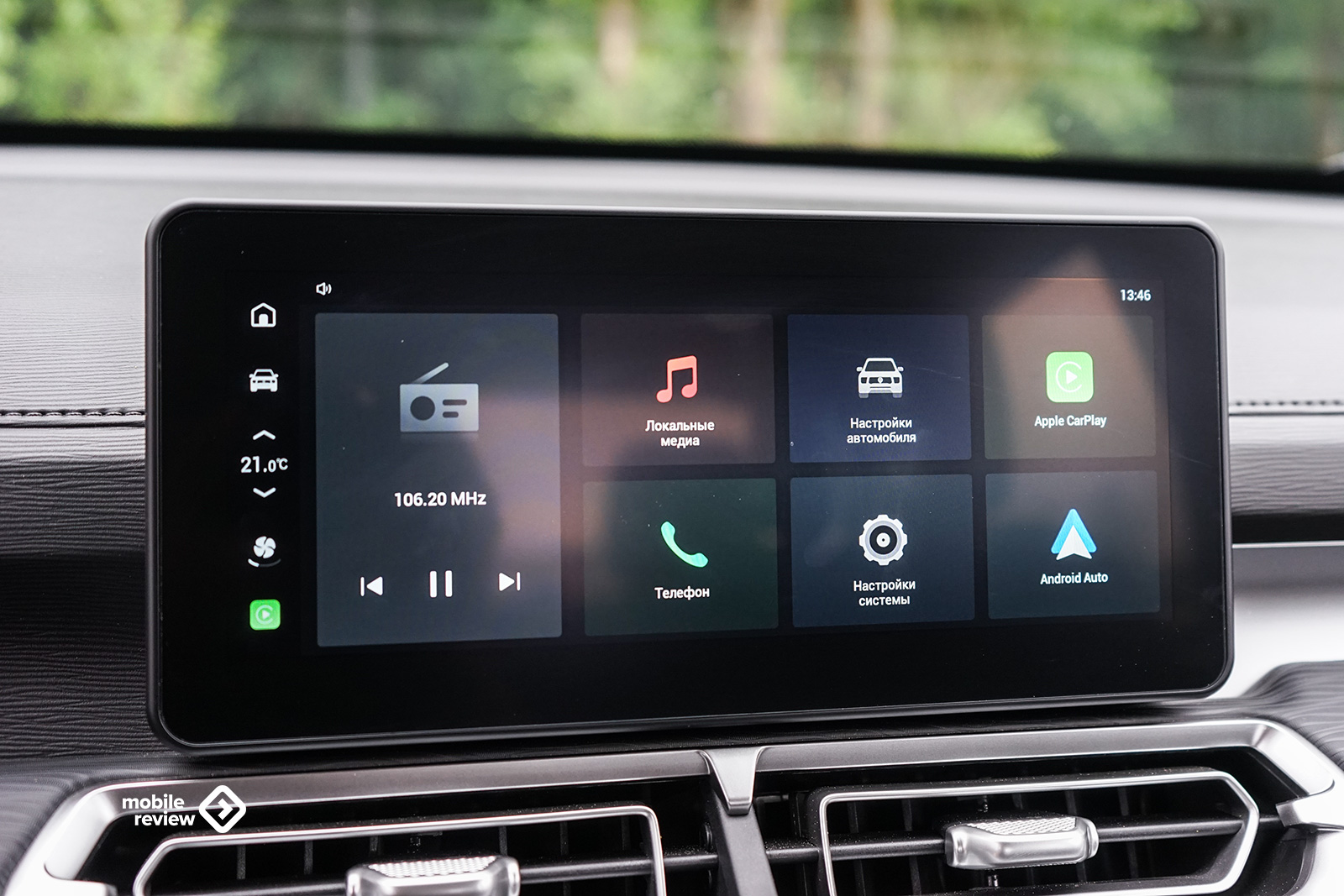
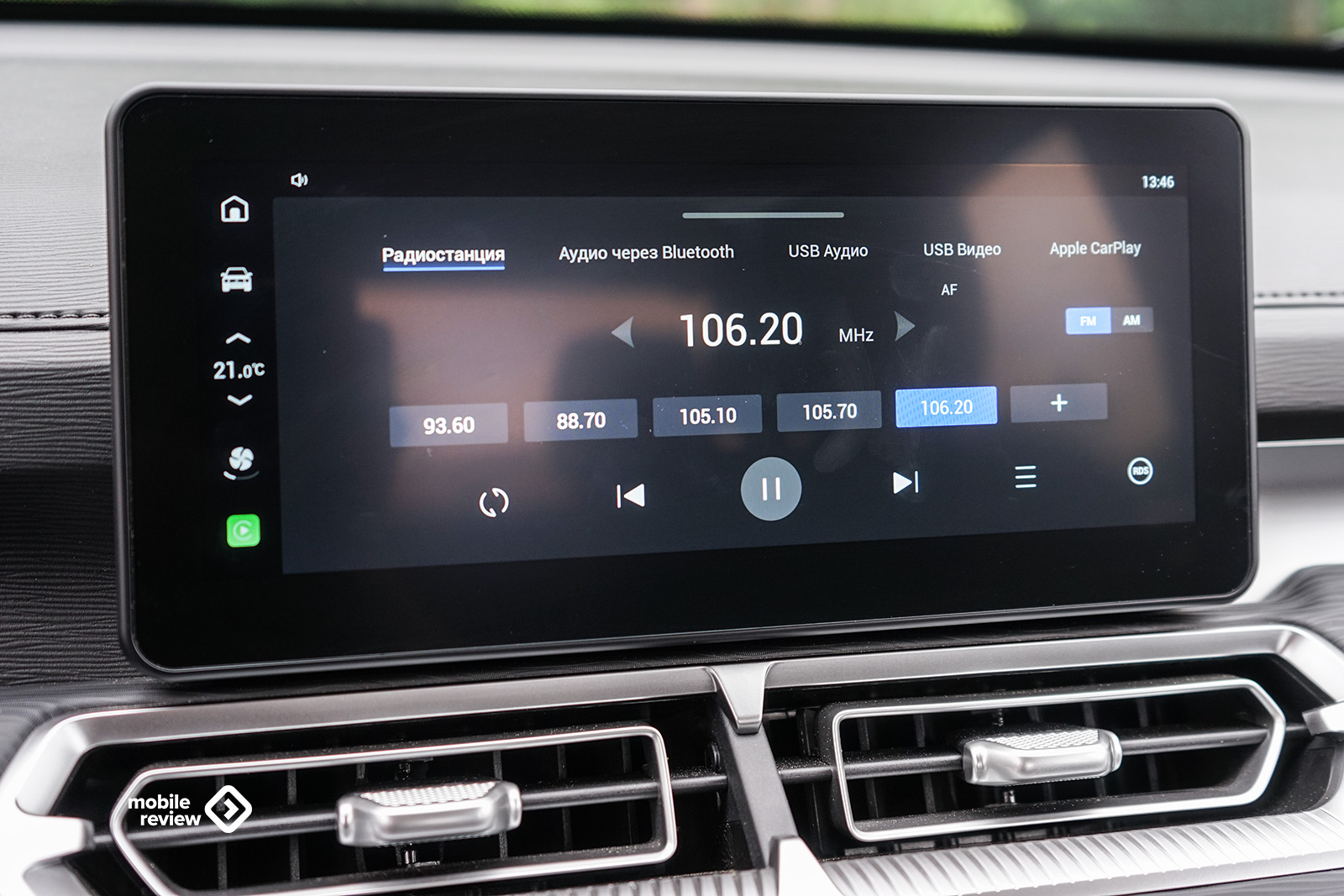
To connect devices, there are two USB-A connectors at the bottom of the front panel, as well as two car sockets, which I think will be useful to someone. In the rear of the cabin there is one USB-A and, most importantly, a 220V socket. And next to the interior mirror you will find another USB for powering the DVR.


Connecting smartphones to the car’s multimedia via Bluetooth is fast, importing contacts is correct, and the speakerphone works well. In the initial configurations, the pickup will have only two speakers, but in the older versions there will be six. The acoustics here are not the best, but for such a car it is enough. On the central tunnel, right under the front panel, there is a compartment with a rubberized coating for a mobile phone. The platform is large, easy to access, but it just begs for wireless charging, which in our case is not there.
Single-zone climate control appears in the top trim levels of the pickup, it works very well in automatic mode and requires almost no adjustments in the process. Of the minuses, I will only note that the climate system data is visible only on the media system screen, but they are not always and not in all modes. Here, for climate control, the manufacturer has placed convenient large keys and rockers on the front panel, which are easy to use. And also all actions are duplicated on the screen. Of the warm options in the car, there is a heated steering wheel and front seats, the latter is only available from the display, and for passengers in the back, only one air duct with air flow adjustment was allocated, and that’s it.
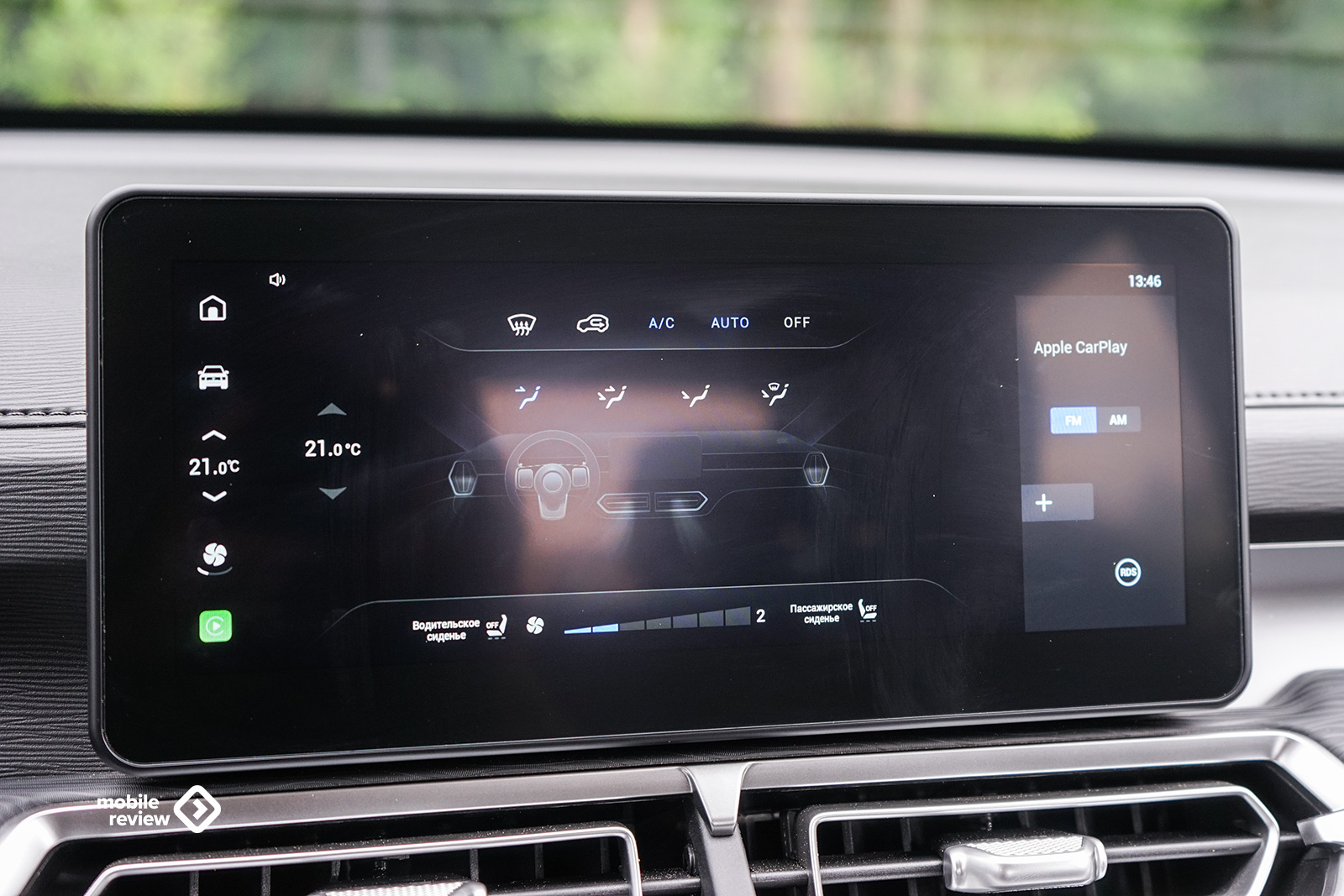
In terms of driver assistants, the Poer KingKong is modest. In addition to the light and rain sensor, there are also rear parking sensors and a 360-degree camera with active markings. The latter displays a high-quality image and allows you to maneuver more comfortably in the same parking lot, which is oh so necessary for such a car.
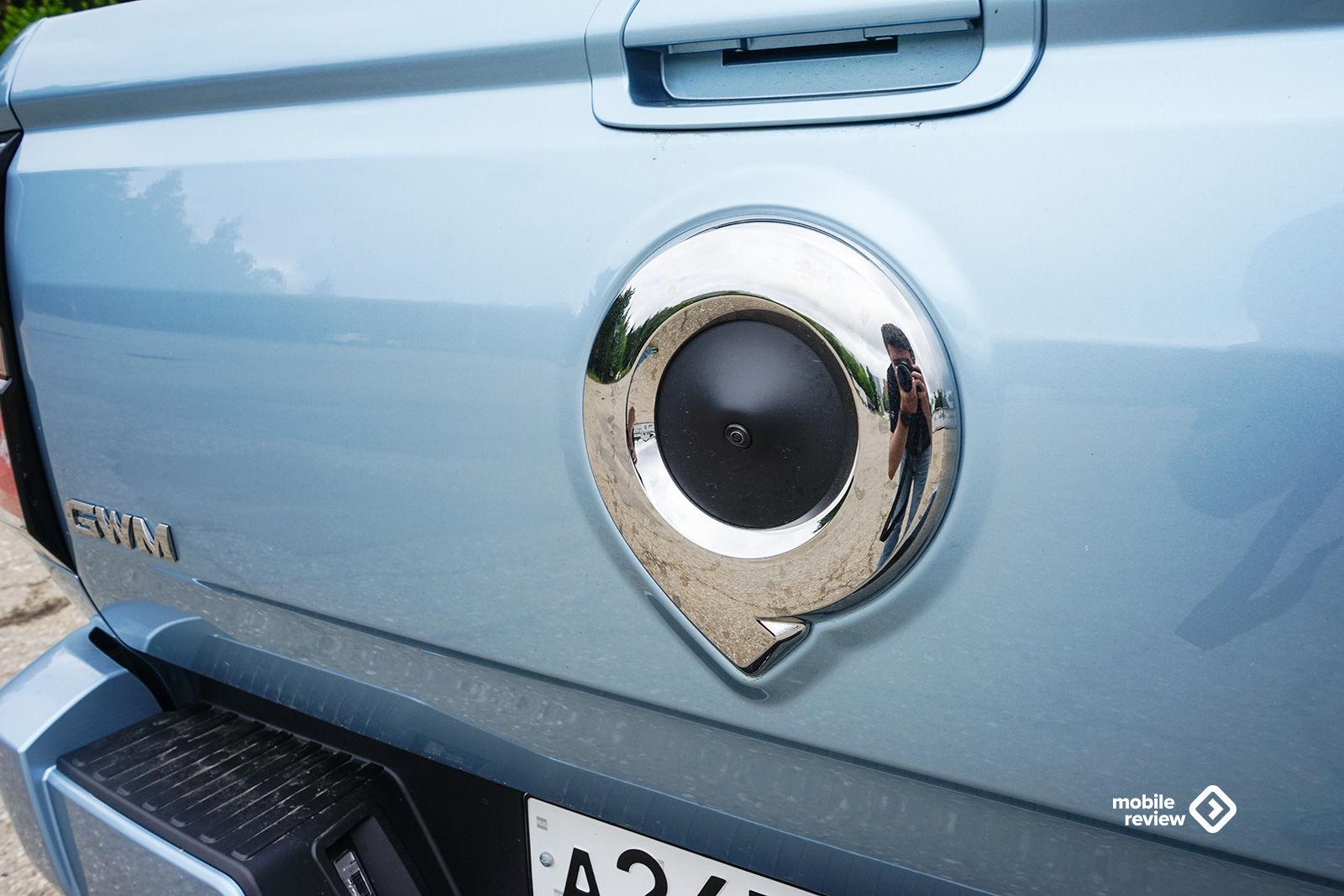
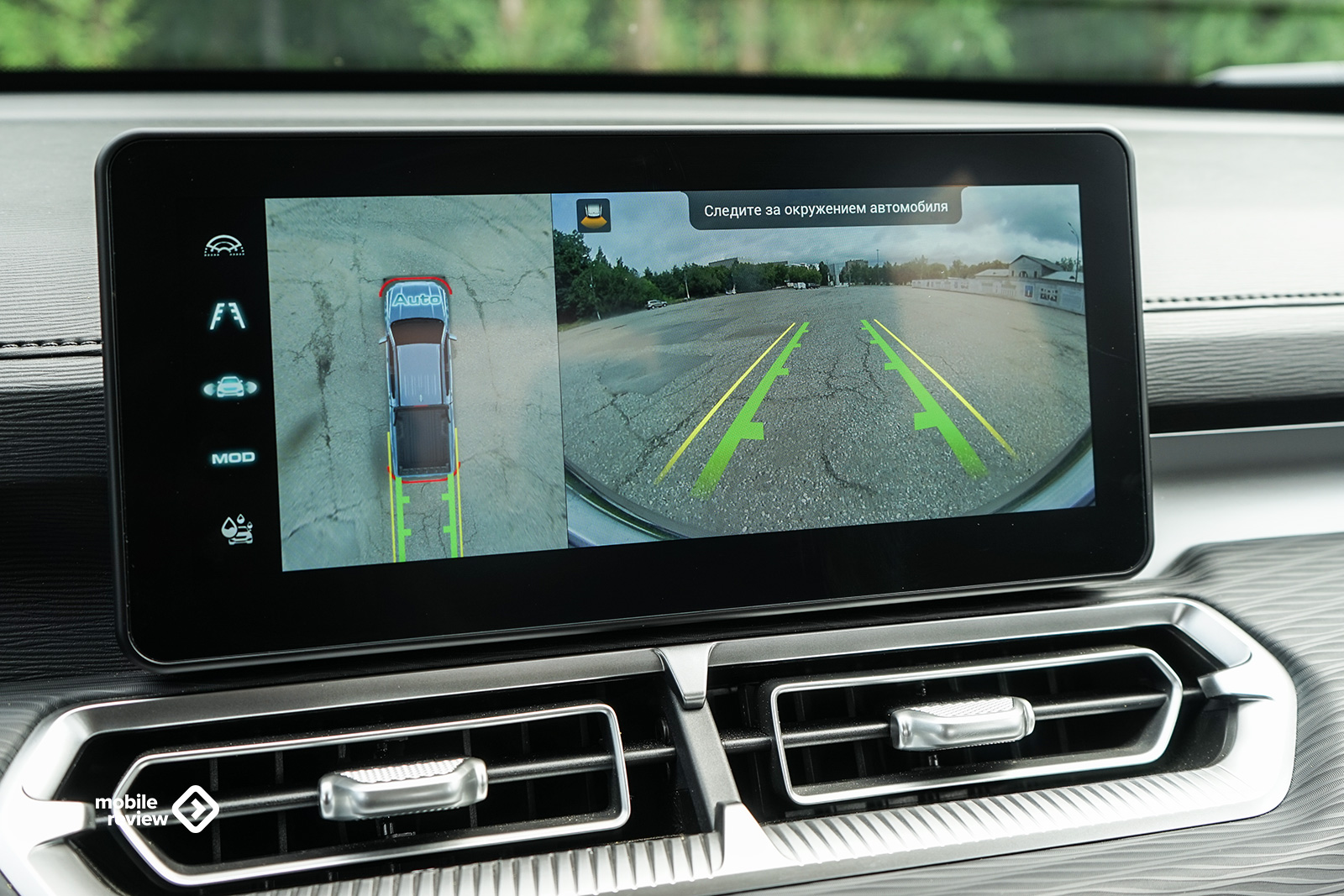
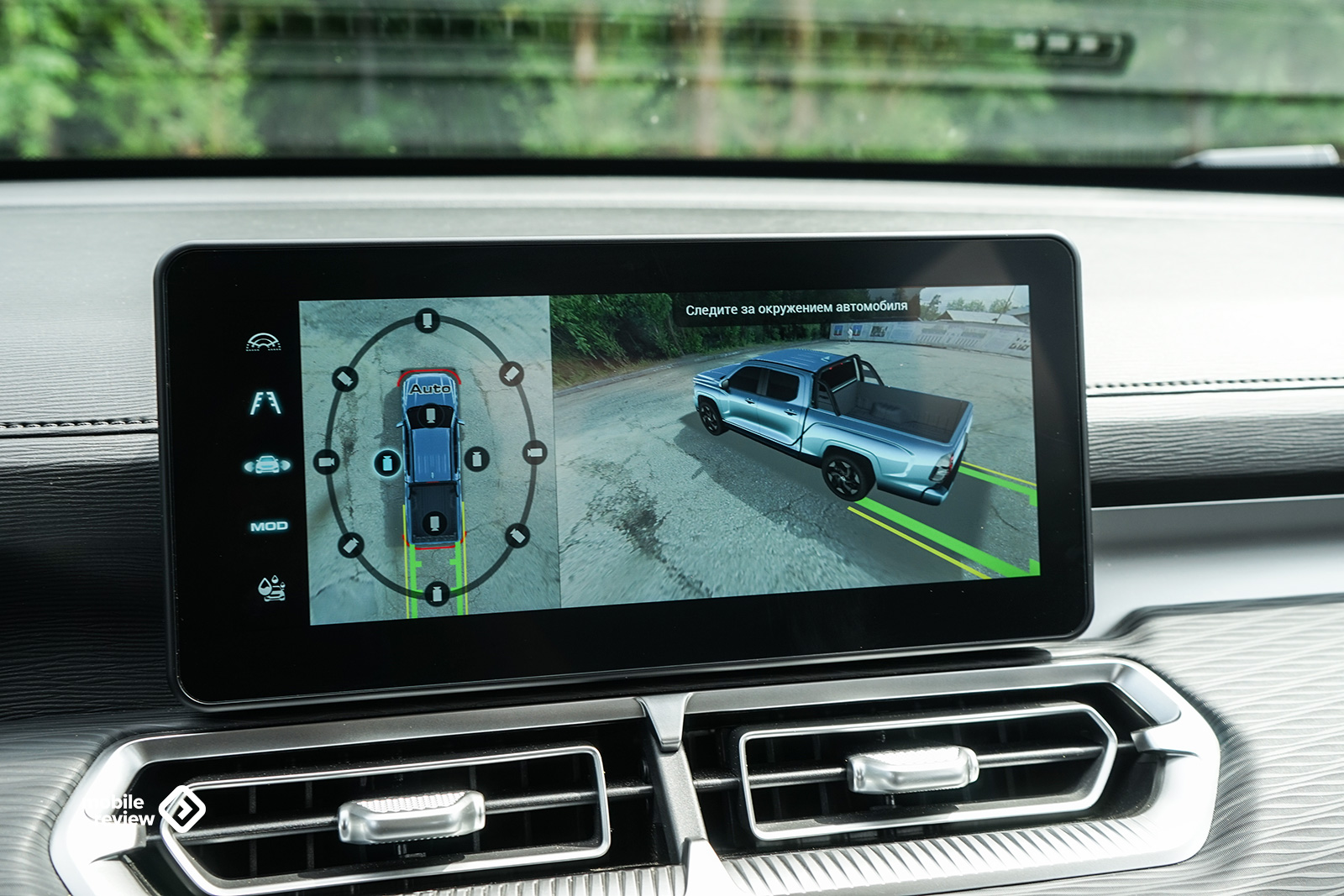
In Russia, the car is available in six body colors, two of which are bright – blue and red. And it costs 3,199,000 rubles for the Comfort version and 3,399,000 rubles for the Elite, both of these modifications are available for gasoline and diesel engines at the same price. Now, using the manufacturer’s marketing campaigns, you can get a discount of 300,000 rubles.
Source: mobile-review.com


